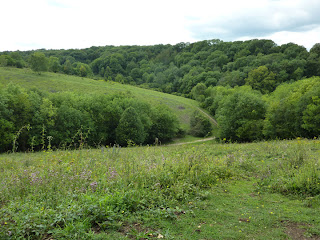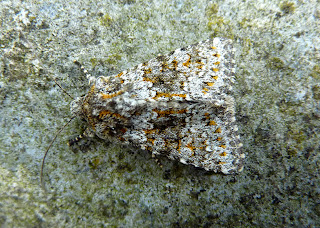They used to watch birds there...
..they still do really, but most of the regular members of the Beddington Farm Bird Group have foresaken birding during this summer to immerse themselves in the black art of pan-species listing. At least Johnny still had his wits about him to notch up a Black Kite a couple of weeks ago (shared with Peter who viewed it from his flat window). The sewage farm plant list is still building nicely, and I've yet to seriously look at the grasses, sedges, willows and roses (maybe next year?). I quite like this laid back approach to observation - if I don't feel like looking critically at something, then why do so? After all, it's not a job. We didn't neglect the birds this morning, with 3 Greenshanks, 10 Green Sandpipers, 5 Common Sandpipers and a messy flock of 2,000 Starlings. I have an aim for the coming week - to catch a Tree-lichen Beauty in the garden moth trap. It would be a lifer and is overdue. There are also some tantalisingly close Jersey Tigers that would grace t








